TRIP BACK HOME!
Hello!
I took a really nice break over the December holidays and reset myself. Though it matters little to the context of this project, I went to Ooty and spent a lot of time in the hills surrounded by greenery, and then to Goa, a beach town with my friends with considerably less greenery. Most importantly, I got to spend some time at home in Bengaluru and learn more about what greenery means to Bengaluru as well as have some interesting conversations with people I met. I also got to do some shopping and buy components for much cheaper than I would in Singapore! Always great to save some money.
I definitely wasn’t as productive as I could’ve been, but I think that’s okay. There’s that phrase: absence makes the heart grow fonder, or distance provides clarity, so I feel confident that I can now approach my project with a clearer focus and also write my dissertation.
Summative Feedback
Over the holidays, we received feedback from Andreas regarding both our dissertation drafts as well as our summative submissions. In summary, my feedback was overall positive, and directions for me for this semester were to refine and develop my input methods and output methods. I had laid a good foundation, but it was time to start focusing on creating a more meaningful conversation.
Reflecting on my final prototype last semester, I think I managed to get a lot done in the span of one week, which also says something about my working style: meander about 80% of the time and get stuff done the remaining 20%. Since now I have a clear direction to move towards, I will try my very best to commit this semester and try to create a more linear curve of progression.
Visit to Paper Crane Labs
When I was in Bangalore, I was just taking a walk near my house when I came across this home-turned-studio that said ‘Paper Crane Labs’. On further research when I returned home, I realised it was a non-profit organisation that supported the idea of increasing access to STEM concepts and projects through creative and artistic means. They happened to have an Open House that Saturday, so I visited.
The space was well equipped with a woodworking area and a couple of 3D printers, as well as a few other Arduino-related projects! The place was still very new and only a few months old, but they had created a really comforting space that anyone could book and work in.
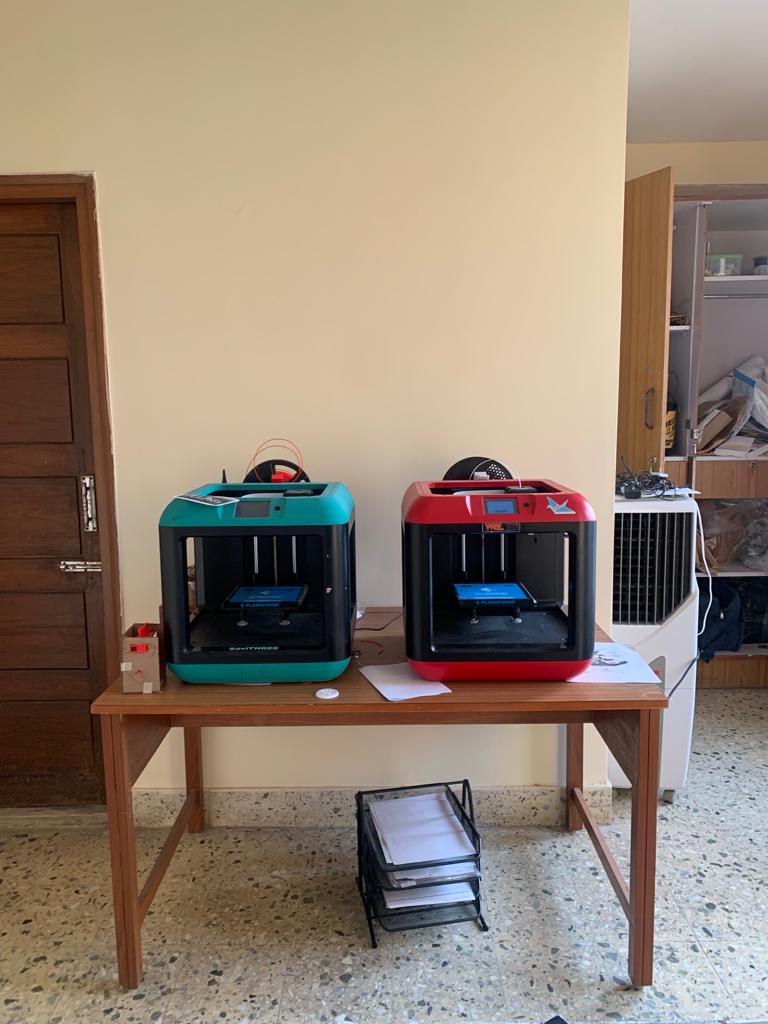
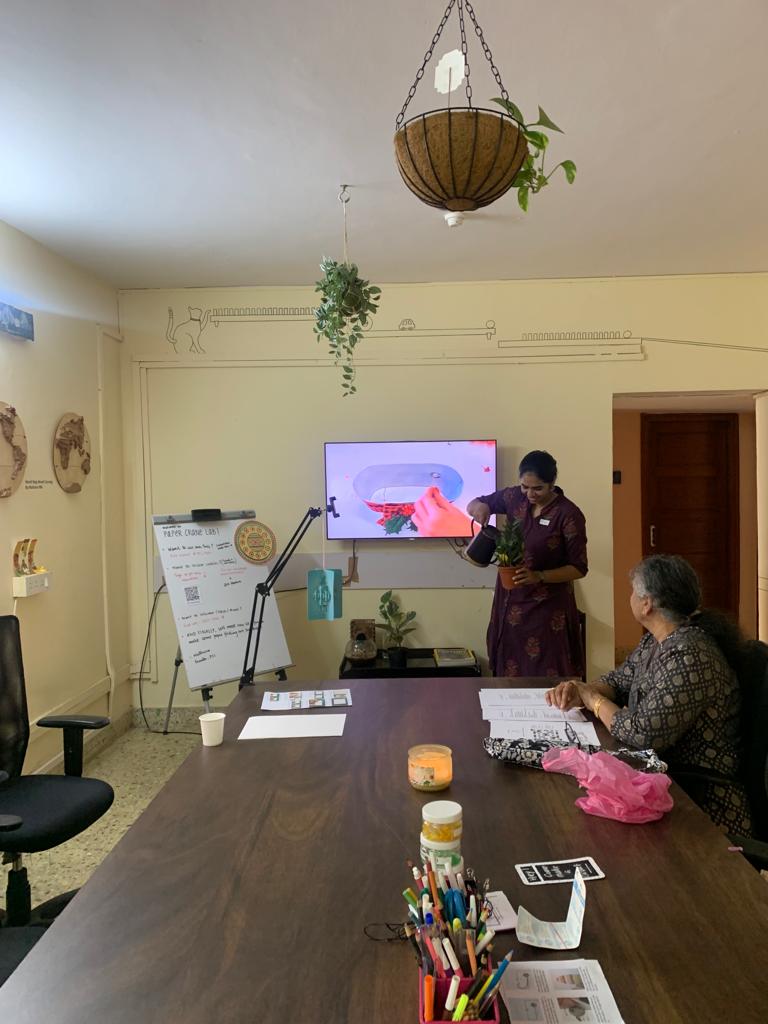
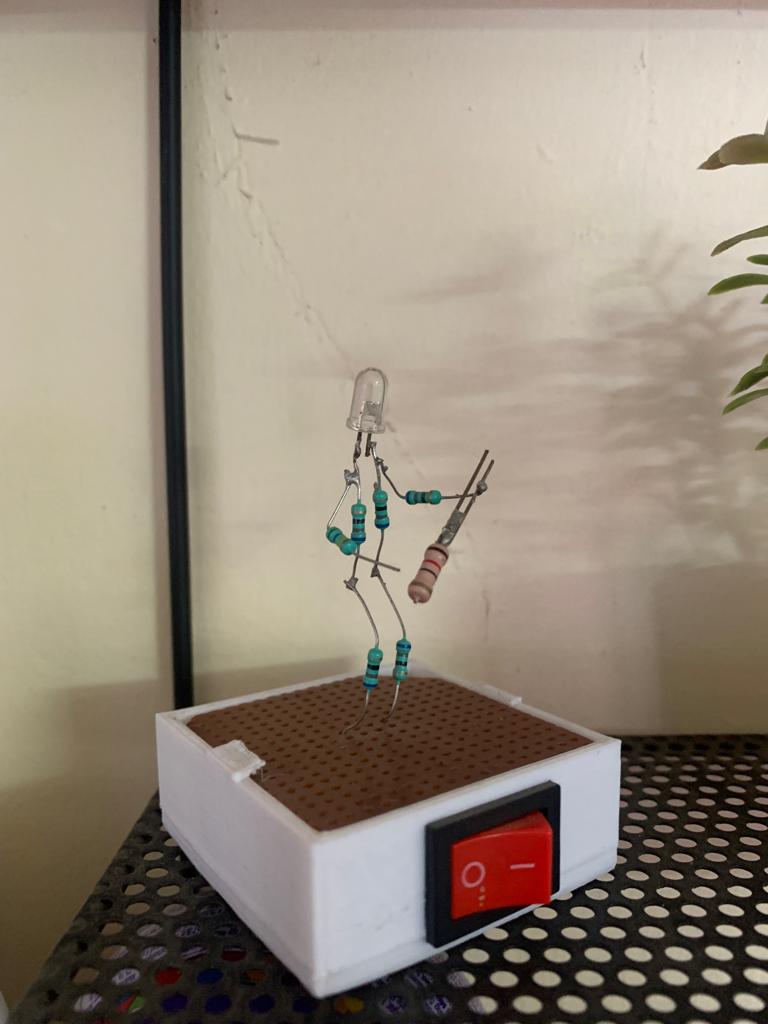
The founder, Mathura Govindarajan, happened to be there as well. She studied electronic engineering at one of India’s top universities and then completed her Master’s at NYU’s Interactive Telecommunications Program. Through her master's, she was introduced to the idea of incorporating creative thought processes and methodologies into engineering processes that she felt could otherwise be very rigid and boring to comprehend/understand. She currently teaches basic creative computing courses part-time with NYU-ITP and started Paper Crane Labs on the side.
Over a cup of chai, we both had a really interesting conversation about her journey in the creative field and her reasoning for starting PCL. Both of us studied in the Indian CBSE education system, which in summary does not prioritise the Arts in any manner or sort. I studied Physics, Math, Chemistry and Computer Science in high school and I hated it, and for my batch, pursuing design as a career, especially abroad, was not as common. Mathura’s aim with PCL is to convey to growing kids that STEM can be applied in a more freeing and fun manner and also introduce the idea of creative technology in a field where no one really knows about it. They also have volunteering opportunities, so when I am in Bangalore next I will definitely do so.
I spoke to her about my FYP and my aims with creating tangible interactions with the help of plants and examining how interaction and ubiquity could look in this scenario.
While this was straying away from my project research objectives slightly, she told me it would actually be a pretty interesting idea to apply in the context of showing younger children that biology, computer science and design can go hand in hand. It was an interesting idea to me, because till now my main objective had been to spark conversation and facilitate some sort of dialogue regarding the state of nature in our lives. I supposed applying Living Media Interfaces in an educational context is definitely some sort of application and of course, is flexible enough to be adjusted based on context and situation.
On a more technical side, Mathura gave me some advice about stabilising noise in my capacitive sensor, since it was a notable issue I had been facing since last semester. She suggested first calibrating the sensor with a specific plant in Arduino, by setting a lower boundary and a higher boundary and then allowing the code to map any incoming readings between the two. She also gave me some feedback on my Axidraw prototype (I showed her the video I made for the summative submission). She liked the drawn outcomes and liked that there was a generation of physical visuals that could be collected and turned into a zine or publication, but she did say the Axidraw as a form of output was a bit removed from the idea of plants and tangible input, which did make sense.
This was a really great visit and I'm glad I came across Paper Crane Labs on a random walk one day. I didn't get a chance to use their cool 3D printers but I think I got free knowledge and advice which is equally as great :)
Propagating Some Plants
I also propagated a bunch of money plants with my Mum and tested out whether they could also turn into capacitive sensors despite the fact that there was no soil. Surprise surprise, of course they did, because it’s the water that really facilitates that conductivity. I’m not being very scientifically accurate here but generally, I do understand that more water = higher fidelity readings. Here’s a pic of the whole lineup! You could totally create a musical piano out of these by connecting separate wires to each bottle. (Sadly I did not pack all of my Arduino stuff so I didn’t have enough wire.)
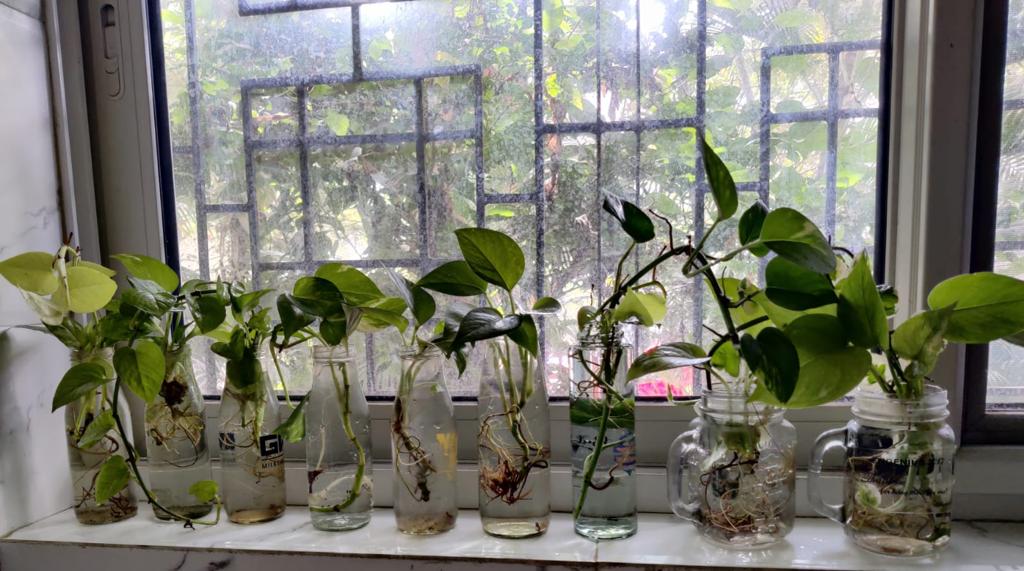
Anyways, this exercise now allowed me to expand beyond just using a potted plant as a source of input. I could also now think about suspending and displaying my plants in different formats, thereby giving me more freedom in terms of the final outcome.
Creating a Survey
I also wanted to quickly find out what other people felt about plants, and while i was in Bangalore, which is where my project started, I thought I could send out a survey to my friends and their families. I was reading the journal article for MIT Media Lab’s pudica project and they had introduced this idea of an interactive touch-me-not to its audience. I thought it would also be interesting to ask the same question to Bangalorean residents, who have a very personal and cultural connection with Mimosas because they’re usually present along streets and in home gardens for children to play with.
Additionally, I really liked the idea of first introducing the idea of a touch-me-not to survey participants as a means to introduce the idea of human plant interaction to someone who has never done it before. I also really wanted to amplify that cultural perspective in my project which I feel is lacking.
1. Do you like to keep houseplants?
2. How many houseplants do you have at home currently? (On average)
3. Do you care for them (water, prune, re-pot) yourself?
4. Why do you like plants?
5. What is your favourite kind of plant?
6. Have you ever interacted with a touch-me-not plant (Mimosa pudica)? (AKA the ones the close and react when you touch them)
7. If yes, did you like interacting with them? Why or why not?
8. Would you like to keep a touch-me-not plant on your desk? Why or why not?
9. If plants could talk, what do you think they would say?

With my survey questions sent out, I also emailed both Harpreet Sareen and Christa Sommerer real quick to ask if they would be available for an interview. I was a bit more keen on Harpreet Sareen due to his cultural background but since Christa Sommerer was responsible for one of the earliest projects about human-plant interactions, (Interactive Plant Growing, 1991), her insights would most definitely be useful.
Week 1, starting off slow but taking the time to reflect and plan out what’s coming up for this semester. I have also been readjusting my Background and Literature Review sections of my dissertation to more accurately reflect my current line of research.
Chatting with ChatGPT
As a side note, ChatGPT has been so in the news lately. I tried to talk to it about my FYP:
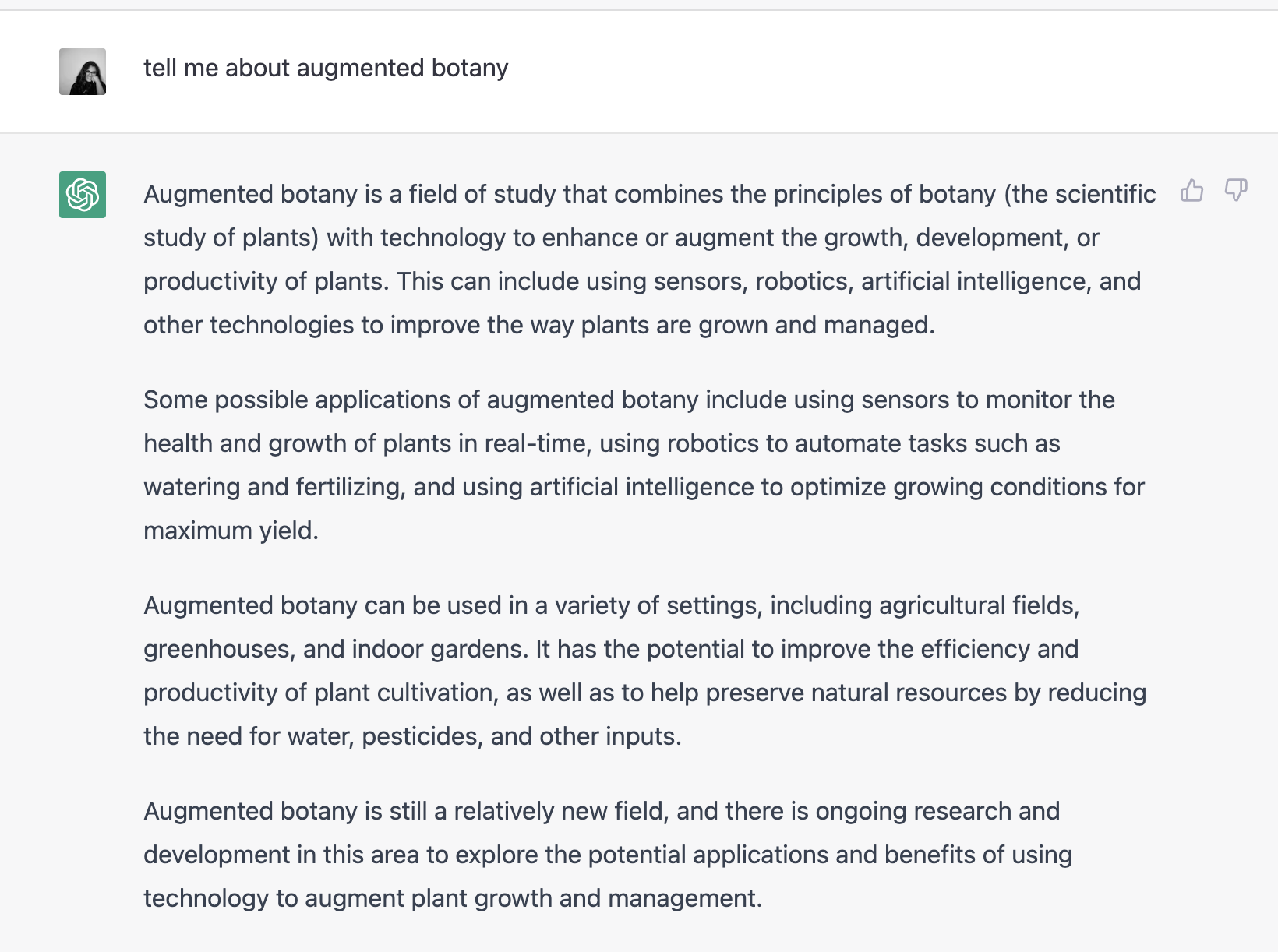


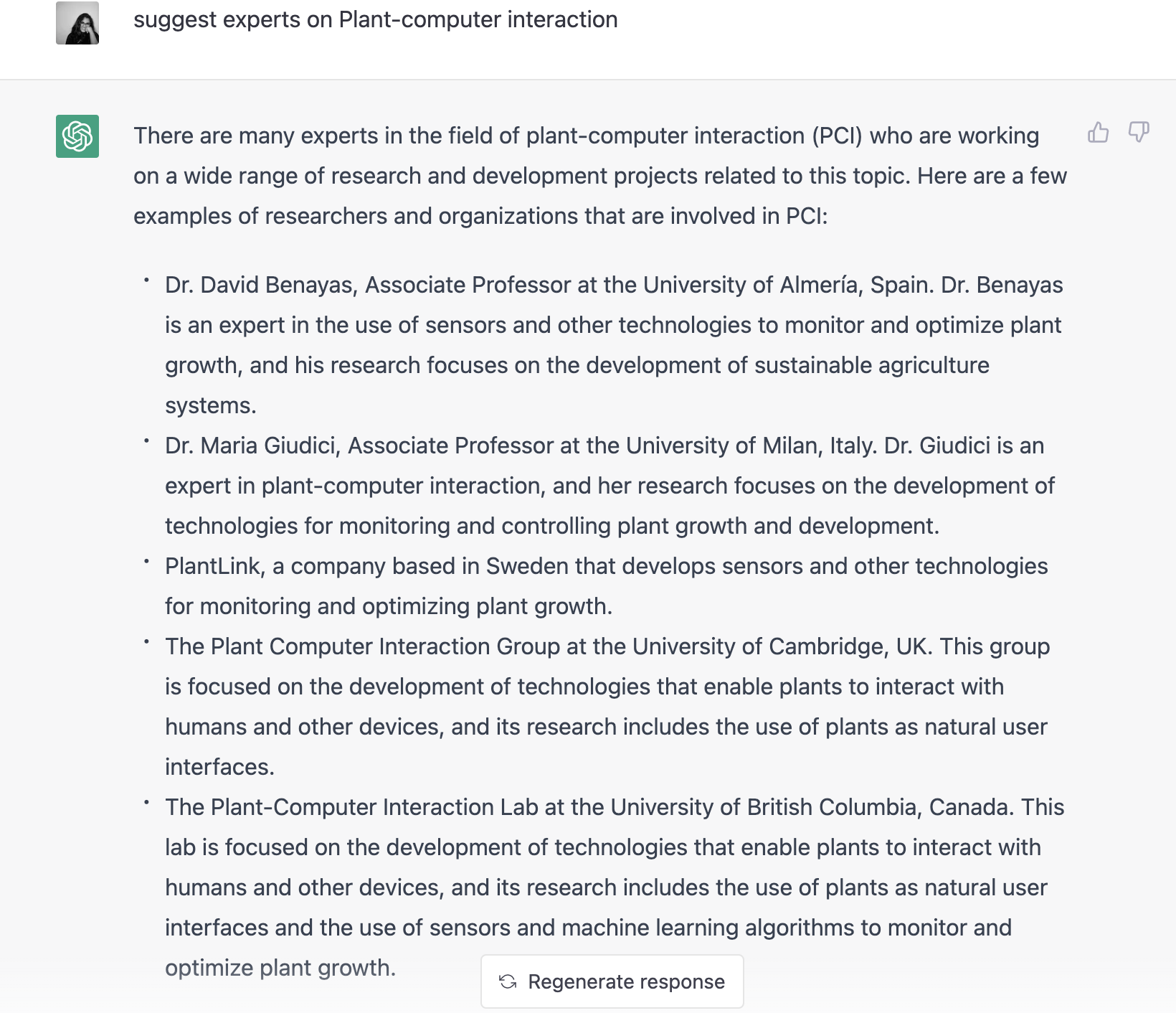
I think it's a pretty great way to scour search engines and receive all the information you might need in a neat solid packet. I would have to manually check these sources, however, to ensure their validity and accuracy, but I think interesting conversations can still spawn!